Pre-Inca Sites In Lima: A Historian’s Guide
Having explored key colonial-era religious sites in Lima in our last post, we now look deep beneath the city’s surface, winding back the clock to look at sites that are not just pre-Columbian, but pre-Inca as well.
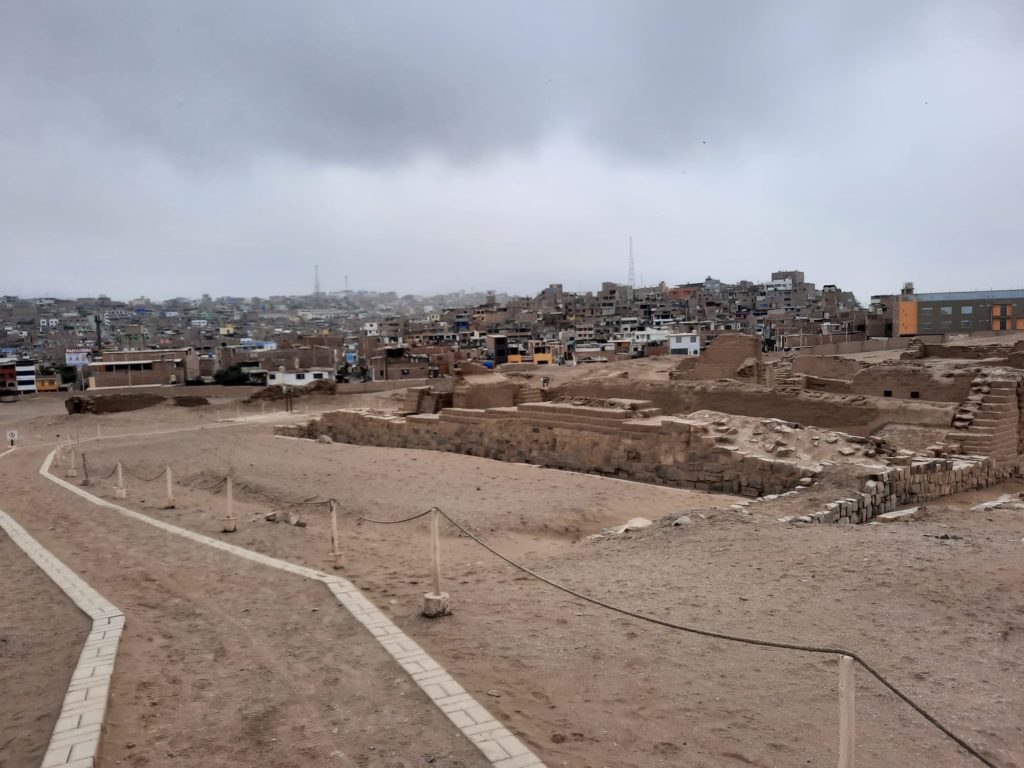
Who Were Peru’s Pre-Inca People?
An important fact of Peru’s history to understand before you visit is that it’s not just about the Inca Empire. In fact, the Incas flourished (and arguably were on the decline again) only about a century before the Spanish arrived. Peruvians are proud that home is one of half a dozen ‘cradles of civilisation‘; locations in the world where civilisations emerged independently. In the case of Peru, there is a long chain of civilisations going back millennia. Some names you will start to see include the Lima culture, Nazca (of the Nazca Lines), Chavin, Moche and Wari. If you spend enough time in museums (which clearly I do) you will even start to recognise their distinctive art styles and motifs.
These various Peruvian civilisations (and I use ‘Peruvian’ here as a shorthand – clearly Peru’s borders are modern, and the Incas for instance controlled territory across six modern South American countries) flourished in different geographies. Of which Peru has a number. The Inca heartland around Cusco is Andean; high altitudes, mountainous terrain. On the coast, an unusual weather phenomenon prevents rainfall, so this is a desert environment; dry and barren, with life dependent on available water sources. And then there is the jungle on the far side of the Andes; verdant, lush and teeming with life. The Inca came the closest to incorporating all of these environments into one way of life. Other cultures tended just to rise and fall in one area.
Lima’s Pre-Inca Sites: Archaeological Survivors in Adobe
When we talk about Lima, this is of course a coastal region. Even in the misty winter, there is no rainfall. Early cultures such as the Lima Culture lived around rivers and other fresh water sources. Their deities frequently came from the ocean and its abundant fauna, such as sharks. The incredibly dry environment means that, happily, archaeological evidence survives pretty well. Adobe building blocks (more or less mud bricks) have weathered the centuries. And organic materials left in burials, as offerings or discarded have also survived. The early Peruvians had one of the finest weaving traditions ever seen, so this is a happy circumstance.
Lima today is a sprawling city of over 10 million people. So it’s perhaps surprising for the modern tourist to encounter expansive pre-Inca sites, often popping up in residential suburbs. I am aware of three, and had the opportunity to visit them when I was in Peru recently. Below I am going to share details on Huaca Pucllana and Huaca Huayamarca, both in suburban Lima, and Pachacamac, which is a much larger site on the city’s outskirts.
These sites tell somewhat similar tales. But the experience of visiting each, and what you get out of it, is very different. In each case the site was founded by one culture, and subsequently adopted by other, later cultures, its usage changing slightly in the process. Post Spanish Conquest, the sites were no longer used (except perhaps to salvage building materials). But with the rise of archaeology as a profession over a century ago, renewed public interest as well as passionate campaigns by individual archaeologists or historians has seen these sites excavated, interpreted and preserved for future generations.

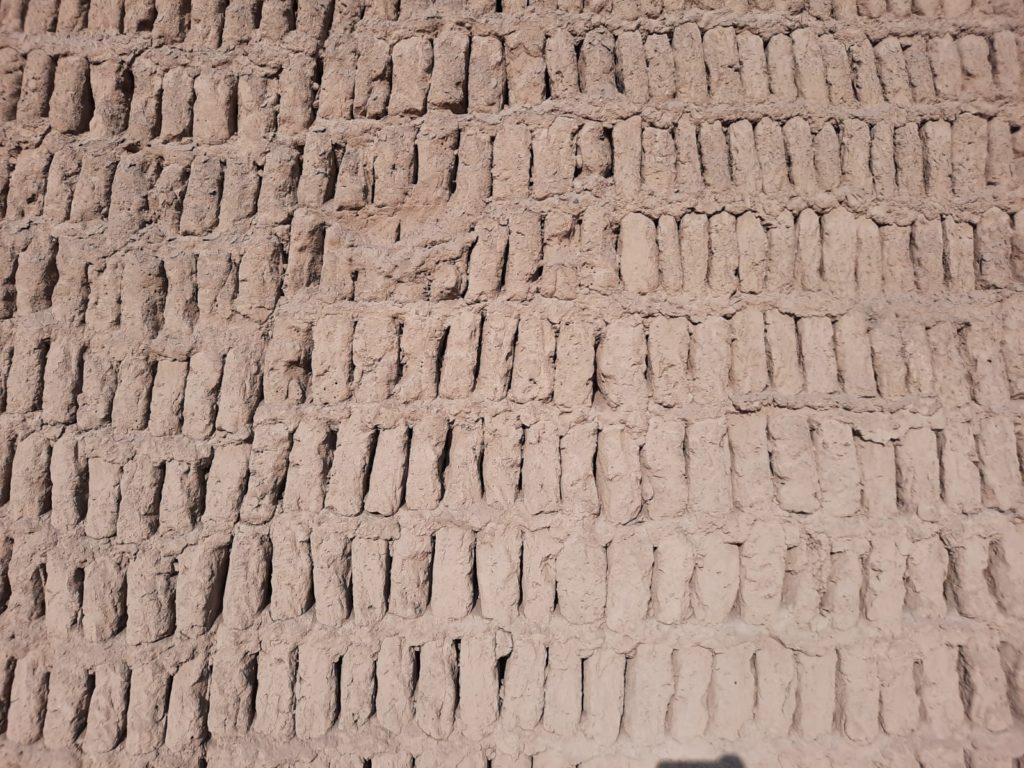
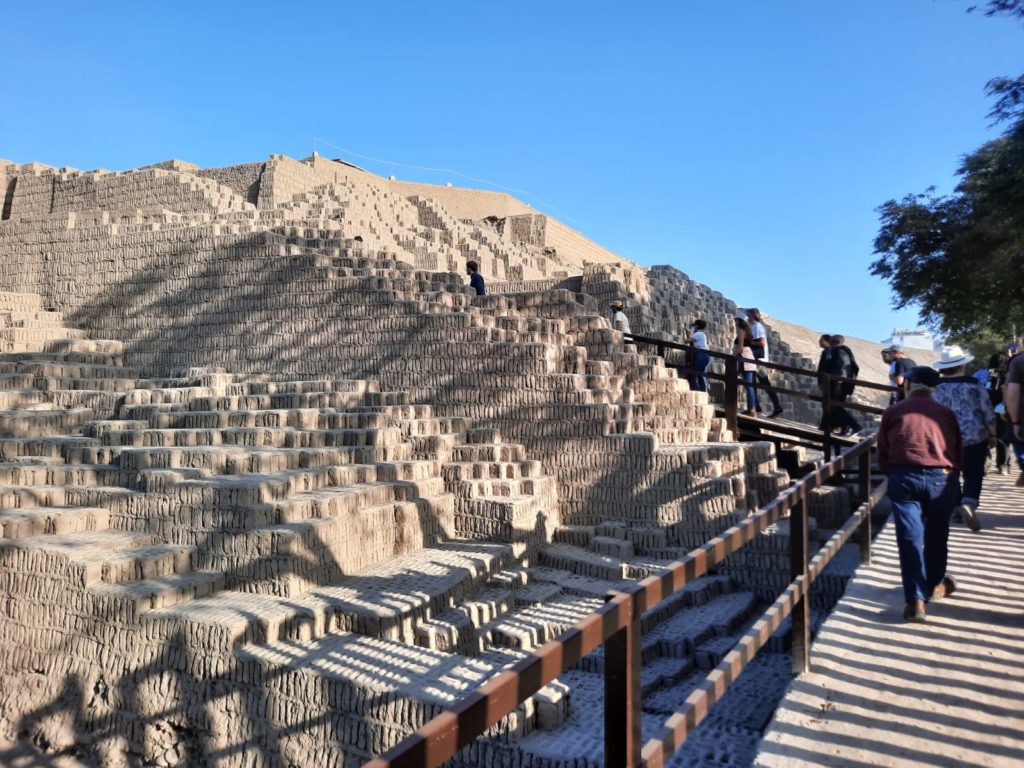
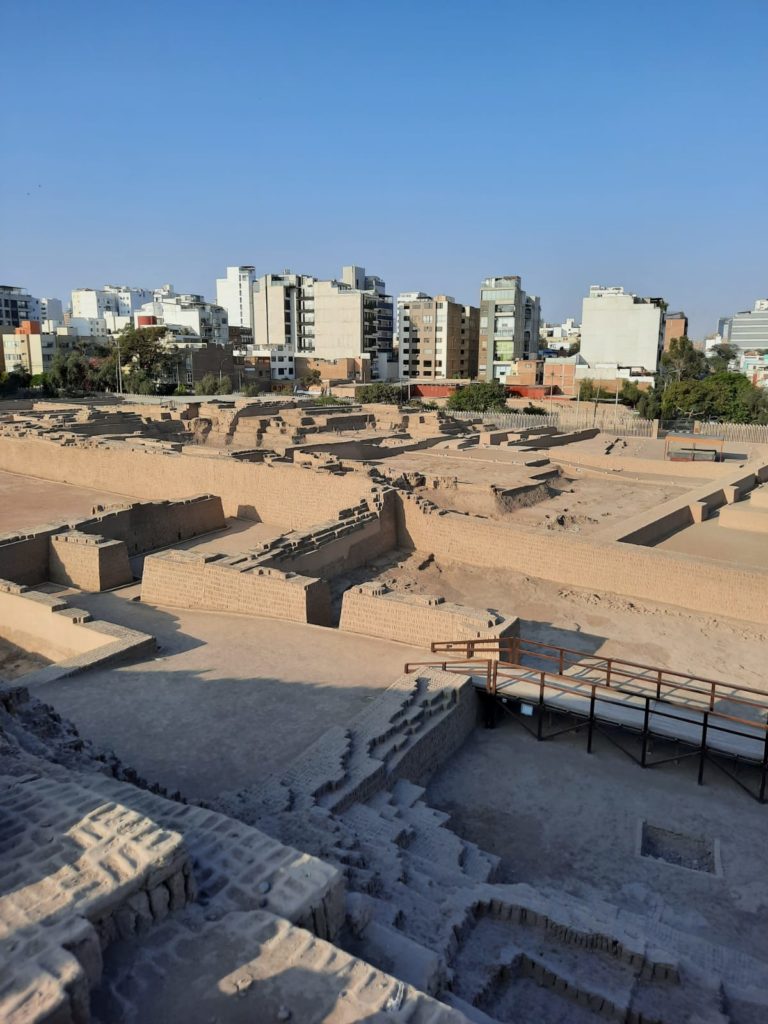


Huaca Pucllana
Huaca Pucllana is the most centrally-located of Lima’s pre-Inca sites. It’s also my recommendation if you only have time to visit one. It is a short distance from the various tourist hotels of Miraflores, and is on the way to the Centro Historico (read more about these districts here).
When I visited (May 2022), it was necessary to pre-book. I tried a walk-up and was unsuccessful. But I was able to reserve a slot on a 4pm English guided visit for the same day. This didn’t cost any more than a regular ticket (although I gave a tip to my guide) so is an option worth looking into. I spoke previously about how late afternoon is a great time to visit sites in Lima because of the beautiful light at that time of day. I honestly think this was part of why I loved Huaca Pucllana as much as I did!
The Lima Culture (c. 100-650 CE) originally built Huaca Pucllana. It was a vast ceremonial and administrative centre, consisting of several staggered platforms built from adobe. Evidence from ceramics and other objects found at Huaca Pucllana (you can see some of these in a small museum) points to worship of the ocean and in particular of a shark deity. After the Lima Culture, the site was occupied by the Wari, who used it as a burial ground for important people, and also the Yschma, who left offerings here.
A guided tour of Huaca Pucllana will take you up to the top of today’s structure (mostly original, a little reconstruction). Enjoy the views over Miraflores and other suburbs. As part of your visit you will also see a little ‘farm’ area with typical pre-Columbian crops and domesticated animals. Mannequins recreate scenes including a burial and manufacturing adobe bricks. The scale of Huaca Pucllana is impressive without being overwhelming. You may also have heard the name Huaca Pucllana in relation to its onsite restaurant, one of Lima’s finest. I didn’t dine here, instead choosing to watch the sun go down over the pyramid from a nearby Italian restaurant.
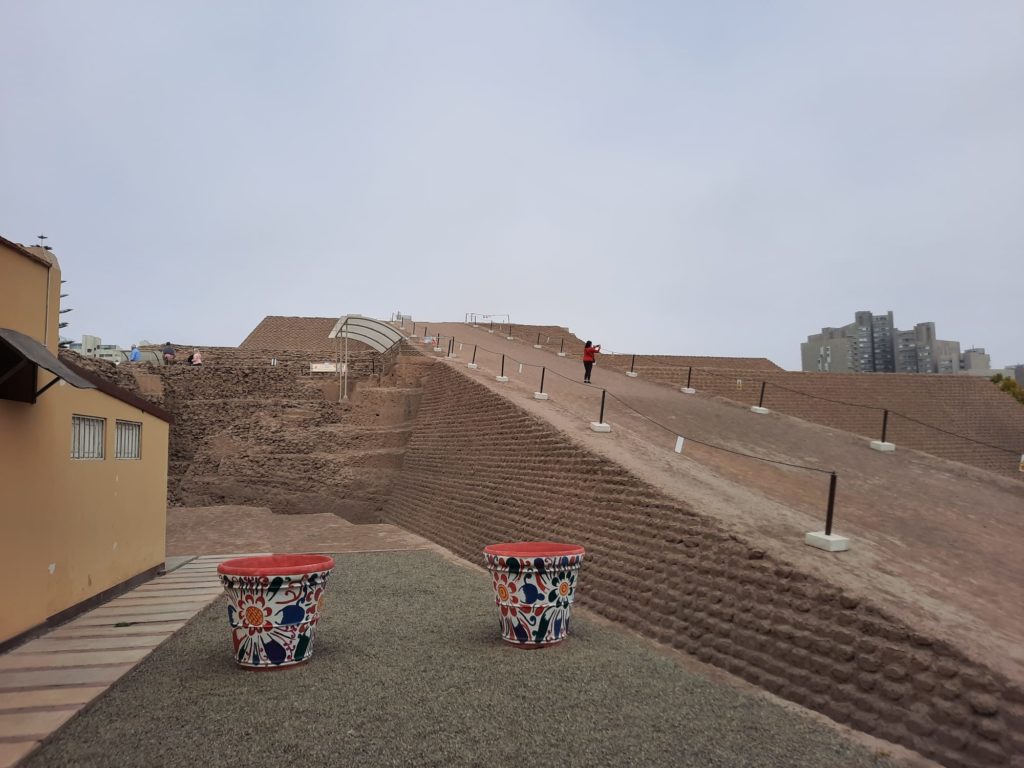

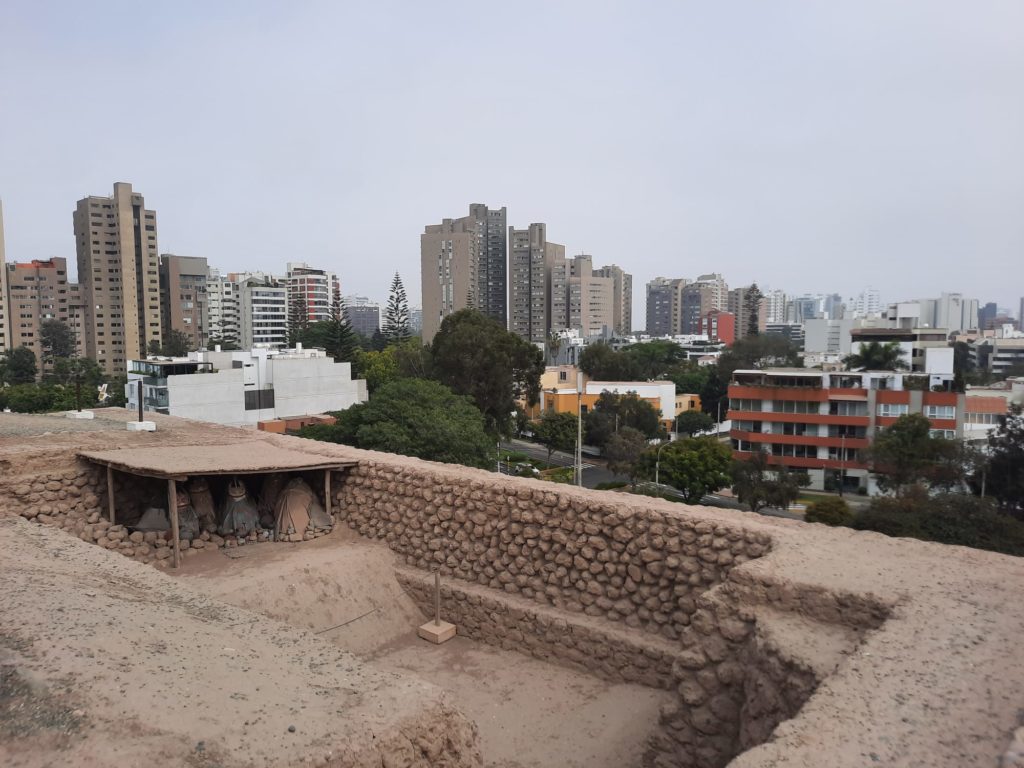
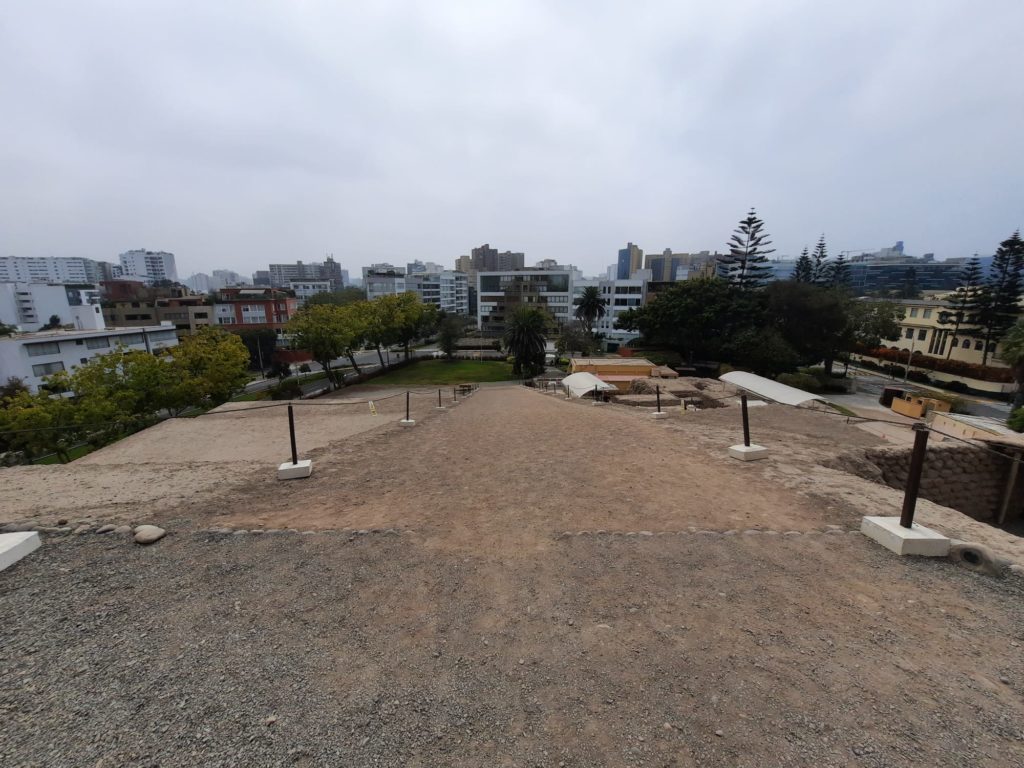


Huaca Huallamarca
Huaca Huallamarca is Lima’s other surburban pre-Inca site, this time in San Isidro. Again this isn’t too far from Miraflores, or otherwise Huaca Huallamarca might combine quite well with a trip to the Museo Larco. However, although it doesn’t require pre-booking, the hours at this site are currently quite narrow. So check before you travel! (Although actually you can see the structure itself quite well from the perimeter fence).
Huaca Huallamarca is a little earlier than Huaca Pucllana, with its earliest occupation dating to c. 200 BCE to 200 CE. Its story is similar, however. After this initial construction (contemporaneous with the Pinazo Culture) it was abandoned for centuries. From c. 900 CE it became a site for important burials. Then the Inca showed up and used it for food preparation and storage, either to feed local workers or supply burial offerings. It then slowly decayed after during the Colonial and later periods, was seriously plundered for building materials in the early 20th-Century, and was protected and restored mainly in the 1960s.
Huaca Huallamarca, compared to the other two sites under discussion today, is definitely an example of restoration rather than preservation. When you look at old photographs, today’s regular pyramid shape is a bit of a leap of the imagination. It was a labour of love by Arturo Jiménez Borja, and information panels at the site explain that the extensive restoration was necessary both to ensure structural stability and as a method of fending off a private initiative to demolish the huaca.
I was a little confused by the situation regarding the site museum. I had read that it was closed, but was given a short orientation of a small yet interesting museum by a staff member. However I had also read about a ‘mummy museum’ and that’s not what I saw, so perhaps there’s a larger museum which remains closed. A highlight for me was a textile fragment used as filler in a brick (above) – an amazing survival story!

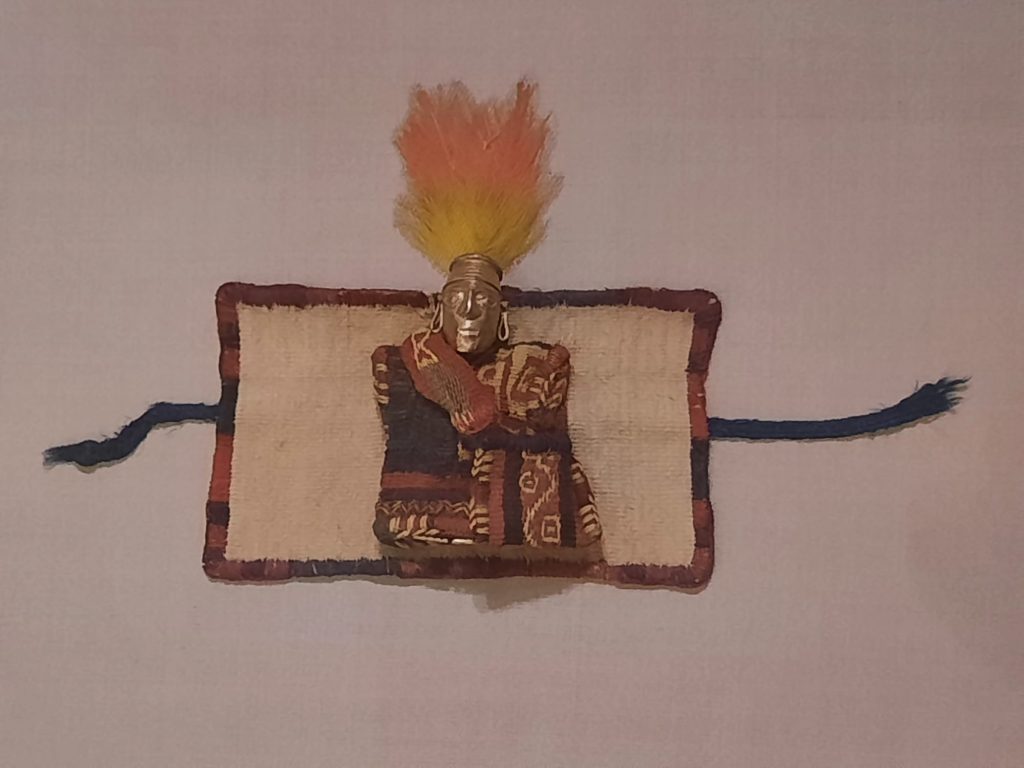
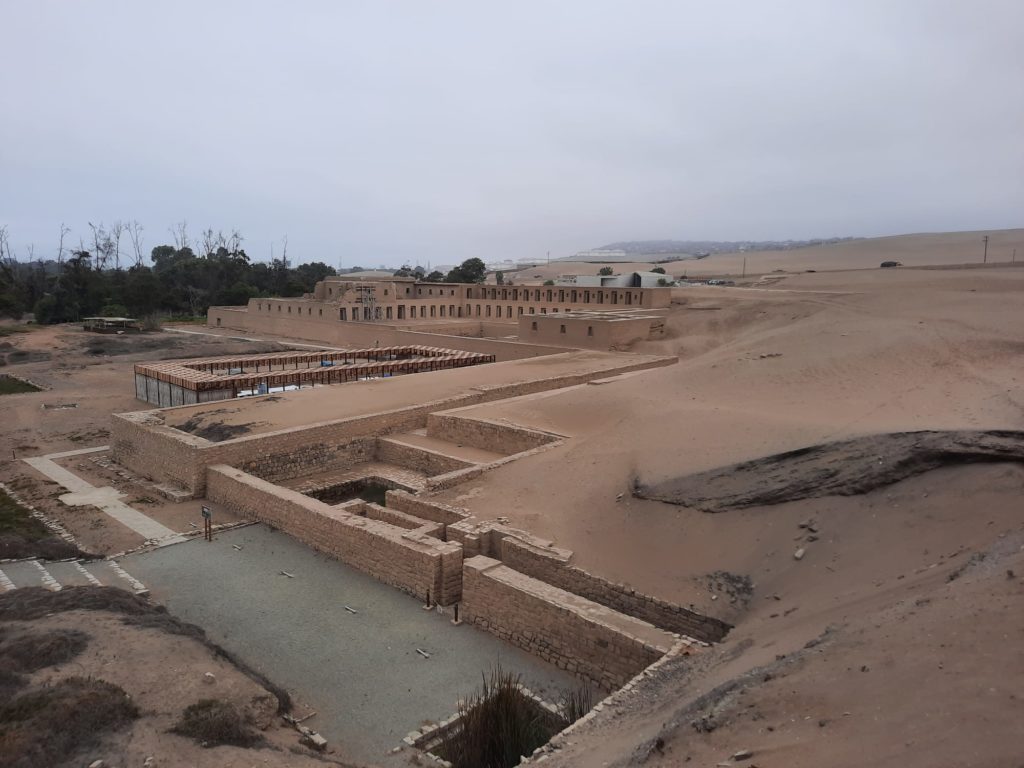
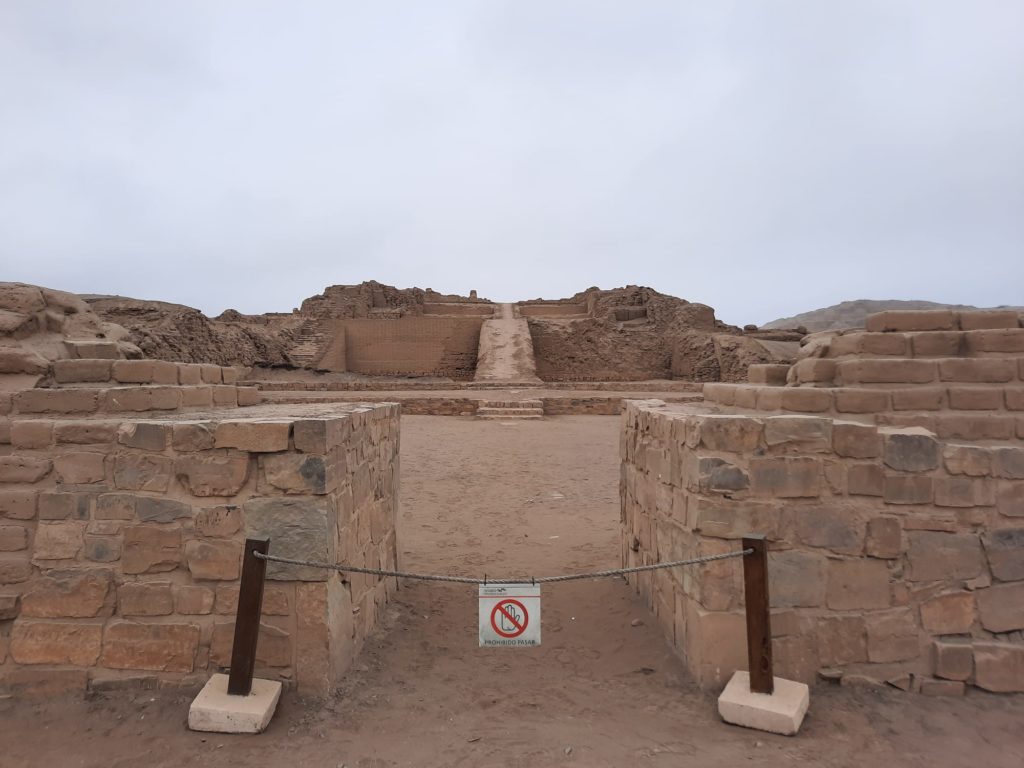


Pachacamac
Finally, in case two pre-Inca sites aren’t enough for you, there is Pachacamac. Pachacamac is further out than the other two, and a lot larger as well. I visited on a half-day tour as this made the logistics easier and also meant I had a guide to describe everything expertly!
Of Lima’s three pre-Inca sites, this is the most important as well as the largest. Pachacamac was a complex of over a dozen pyramids as well as an administrative centre. Not everything has been excavated, so if you visit today you will find a museum, excavated streets and pyramids, reconstructed buildings, and sandy mounds that merely hint at what’s beneath. And in my opinion this is by far the best spot in Lima to remind you just how much of a desert you’re in. Aside from small oases fed by underground water sources, the landscape is incredibly barren despite being a stone’s throw from the ocean.
Like the other sites, Pachacamac was by turns Lima, Wari, Yschma and then Inca. Pachacamac was a deity, and also an oracle. There was an elaborate 40 day ritual to gain access by fasting and preparation. The god Pachacamac was important enough that the Incas, when they arrived, paid deep respect to him. The Spanish were not so impressed however. Francisco Pizarro didn’t like the quantity of gold and silver at Pachacamac, and was disgusted to discover that the god inhabited/was signified by a carved wooden pole (image above – this somehow miraculously survived!). So he destroyed and burned the site.
Pachacamac is so big, and so beige, that I think you have to love archaeology as much as I do to really make it worth the trip. The on-site museum has some great artefacts and is more modern than those at the other two sites, but you need to weigh up whether this is worth setting aside half a day. For the aspiring archaeologists out there, however, it’s a great way to understand Lima’s origins both geographically and culturally.
Trending
If you see this after your page is loaded completely, leafletJS files are missing.

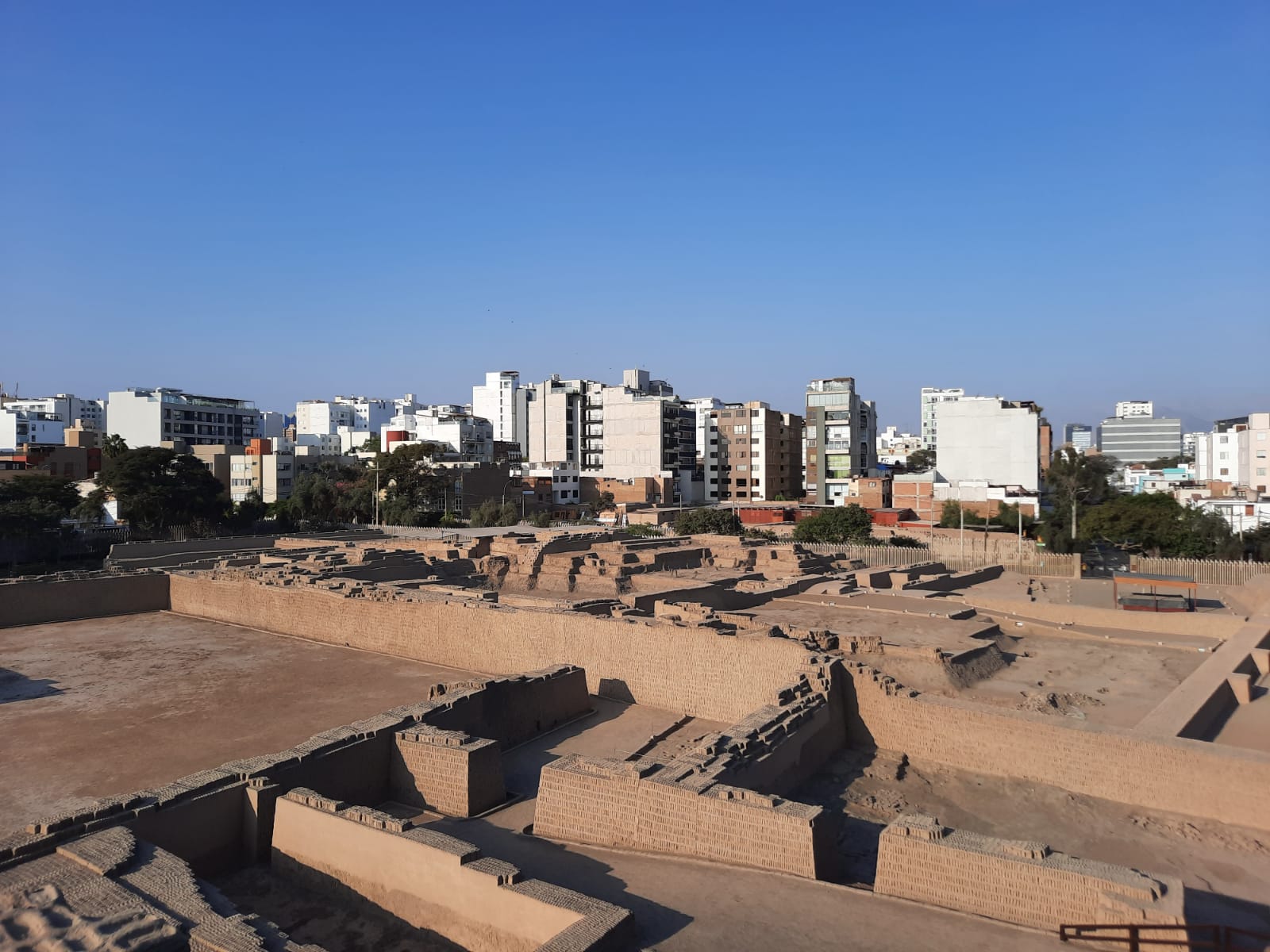
2 thoughts on “Pre-Inca Sites In Lima: A Historian’s Guide”